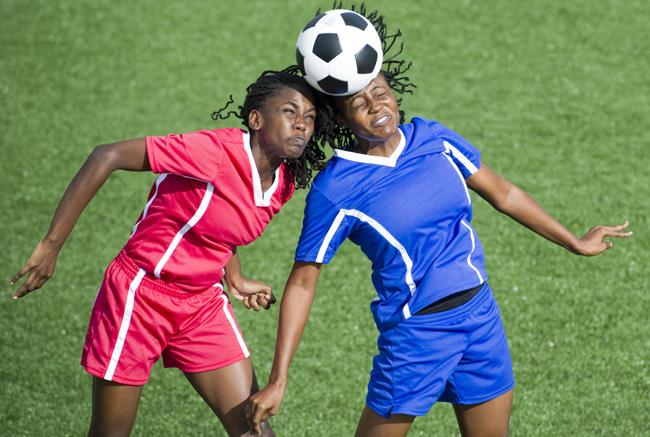Concussion Symptoms and What to Do About Them
Because soccer is a contact sport, playing even for fun comes with the risk that some contact could be too much for the body. The human body is coordinated by a delicate organ called the brain and any heavy impact to it is always a serious matter. A concussion is an injury to the brain. In more specific terms, it occurs when the brain – a soft, complex organ – makes contact with the bone of the skull. A concussed individual may not have full awareness in the period after impact, making them respond to their environment with less control and command of one’s body. Depending on the severity of impact, a concussion could lead to outright unconsciousness.
The Symptoms
Different people will have different reactions to impact. When two adult men of equal body mass jump for a ball, the effect of one’s impact on the other may be less than when a young player is clattered into by a more physically developed person. But outward physical size does not necessarily allow us to predict the likelihood of suffering a concussion from contact. For one, you cannot see anyone’s brain size by watching them play on the field and you never can really tell how some contact has impacted the body at a given moment.
Loss of consciousness is the most noticeable symptom of a concussion but this is not the result of all concussions. In some situations, a player may appear to have lost control of their body but, again, it may not be a case of concussion; this was the case in a recent European Champions League soccer match. That said, care must be taken to watch out for evasive signs. Some athletes can suffer a concussion and be unaware, going about playing the match with the real risk of possibly attaining an injury that may be even worse. As long as a noticeable clash of heads or significant body collision has occurred, it is important to do a well-rounded check to ascertain or rule out concussion.
Some symptoms of concussion may include:
- disorientation or confusion, whereby a player does not appear to be thinking clearly
- amnesia, as in when the concussed player forgets what caused the injury
- dizziness, drowsiness and sluggishness, a situation in which the player looks or acts sleepy
- being slow to answer familiar questions
- experiencing headache, feeling nauseous or vomiting, and
- being unusually sensitivity to light or noise
The Response
Concussions are taken very seriously in soccer. When one happens during a professional game, the referee is bound to stop play and call for treatment for the players involved. Notably, they are attended to on the pitch until a decision is made as to whether they can play on or not.
Here are the main steps to take:
1. Recognize and Remove: This should be done when it looks like something wrong has happened and the player shows signs of physical pain. There are “red flags” like neck pain, double vision, headache and vomiting to look out for. Unless it is to ensure the airways aren’t blocked, it is crucial not to move the player if one does not have the requisite training.
2. Observable Signs: in the absence of red flags, signs of disorientation, slow labored movements and motionlessness on the floor should be checked for.
3. After checking for signs, the symptoms already listed above should be checked for.
4. Then, a memory assessment should be done. The questions to be asked include, “What day is today?”, “What venue are we at today?”, “Which half is it now?”, “Who scored last in this game?”, “What team did you play last week/game?” and “Did your team win the last game?” The inability to answer these correctly could suggest the athlete is suffering from a concussion.
Caring for a Concussed Athlete
It is advisable that athletes who have suffered a concussion should not be left alone for the first couple of hours after the incident. Also, they should not drink alcohol, avoid recreational or prescription drugs, not be sent home by themselves and should be in the care of a responsible adult. They should also avoid driving a motor vehicle until a healthcare professional gives the assent. Importantly, getting enough rest after a concussion is absolutely non-negotiable. The child should be made to rest as much as possible as the body would be more tired than normal. When the concussion is only mild, a doctor’s evaluation can provide assurance from between seven and ten days that symptoms have cleared. But knowing that body types are different, it is important that the process is not rushed and that any medical advice to delay a return to action is closely heeded.
Conclusion
Concussions are grave injuries which require proper diagnosis and subsequent treatment in order to ensure an athlete is sufficiently rehabilitated. Knowing what to look for and how to go about remedying the situation is of paramount importance in ensuring that the soccer player receives the appropriate care without having to compromise more time off the field than is necessary.


